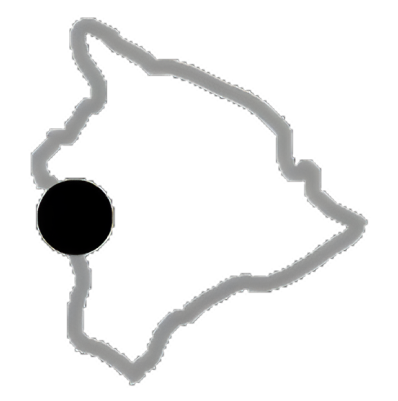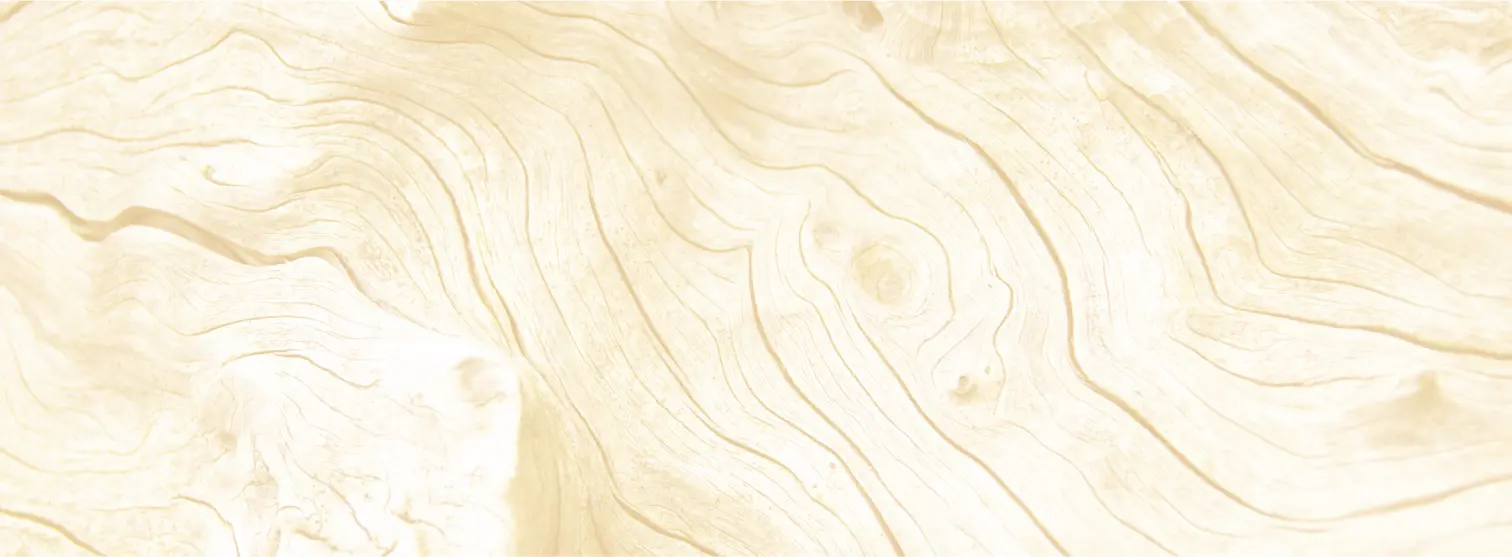Now imagine all of these passages interconnected with very special creatures walking about. Envision a subway system of basalt with commuting crickets, spiders, flies, planthoppers, earwigs, millipedes, and centipedes. Imagine this and you’ve captured a glimpse into the world of Hawaiian cave animals. You’ve imagined one of Hawaii’s spectacular evolutionary tales.
Rob Pacheco
Examines a Stalactite
Animals that are restricted to life in the dark zone of caves are called troglobites. Troglobites live in a three dimensional maze of completely dark passages with high levels of humidity and unusual air mixtures. To live in this underworld, they have acquired adaptations that allow them to reproduce and find food in the dark, maintain bodily water balance, and breathe unusual air. Cave adaptations of troglobites are similar around the world. They tend to have reductions of eyes, wings, pigmentation, and the thickness of their exoskeletons. They also have smaller clutches of offspring than their closely related comrades do on the surface.
Up until twenty years ago biologists thought that troglobites were found only in continental limestone caves in temperate regions. They thought that the troglobites lived mainly in human sized cave passages, and that the creatures were relicts of extinct species from the surface. As the surface environment changed and became hostile, for example from climate change, individuals were forced into caves to save themselves. If there was enough exploitable food resources, they could eke out an existence. In the cave, natural selection pressures produced mutations, that over millions of years, produced specialized cave fauna. That’s the way the storyline went.
In 1971 Frank Howarth, an entomologist from Bishop Museum, discovered the first Hawaiian troglobite. Since then nearly 50 different species of cave adapted animals have been identified in Hawaii. Their discovery began a revolution in cave biology and has provided for some of our best insights into island biology. On a geologically young and geographically isolated place like Hawaii, Dr. Howarth notes, nature produced evolutionary wonders such as “underground tree crickets, blind planthoppers, a terrestrial water treader, and the epitome of adaptive shifts, a no-eyed big-eyed hunting spider.” With the Hawaiian troglobites, the storyline changed.
One classic idea down the tubes was that of time. The island of Hawaii is estimated to be less than a million years old. It is highly unlikely that troglobites from the older islands colonized the Big Island’s caves. It would be very difficult for a blind, thin skinned, flightless fly to make his way out of a cave on Maui and land alive on Hawaii to find another underground home. Besides not being able to see where he’s going and doing the random walking the cave critters do, if he did make it out to sunshine, the lack of humidity on his thin exoskeleton would cause him to dry up into a flaky piece of chitin real quick. The Big Island’s cave fauna originated here. The greatest diversity of cave species is found within caves and lava flows less than 20,000 years old. This evidence suggests that cave adaptations happen in an incredibly brief time, probably much less than half a million years.
Another plot line to go was the idea of cave species as isolated relicts. Hawaiian troglobites, such as the planthoppers, have close relatives living in the forests right upstairs. These surface insects, with large compound eyes, long wings, and dark coloring, contrast intensely with the cave cousins who have no functional eyes, little stubs of useless wings, and no color whatsoever. Plus, another strike against the relict idea is that caves barely a hundred years old have troglobitic planthoppers. Could new species evolve so quickly from a surface colonization? Scientists didn’t think that possible. What they discovered was the subway system underground.
Cave Cricket Photo by Bill Mull
Flightless Fly Photo by Bill Mull
No-eyed Big-eyed Hunting Spider Photo by Bill Mull
The colonization of new lava tubes is a matter of migration from one underground space to another. Cooled lava has a phenomenal amount of caverns. Lava tubes are the biggest-the macrocaverns. In the middle are cooling cracks, lava bubbles and lava layers-the mesocaverns. The tiniest passages, up to a millimeter in size, form from gas vesicles or spaces in fine rubble-the microcaverns. All of these form a mind-boggling system of interconnected branches. In fact, Howarth and others believe that most of our underground denizens live within these subhuman spaces. By placing pitfall traps at exposed mesocaverns in road cuts, they have collected an assortment of these miniature, migrating monsters.
The fact that most of our troglobites live within voids that humans cannot enter bodes well for them. Human intrusion into caves impacts the specialized animals. Howarth has shown that the level of species diversity and populations of troglobites are inversely proportional to the amount of human visitation. Cave visits mean dead troglobites. While researchers and cavers may one day be unable to find a cave cricket in a cave, you can wager they are there in the narrow chasms that spread like veins and capillaries through the lava flows of Hawaii. It doesn’t take much of an imagination to visualize lots of things creeping through the cracks beneath us.


